Space News
Spaceflightnow
214

NASA’s Lunar Trailblazer, AstroForge’s Odin face post-deployment challenges
- NASA's Lunar Trailblazer and AstroForge's Odin, launched as rideshare payloads on Intuitive Machines' IM-2 mission, are facing post-deployment challenges related to communication issues.
- Odin, a spacecraft from AstroForge intended for an asteroid flyby, encountered troubles after deployment, with intermittent communication being reported.
- AstroForge's mission control center provided updates on Odin's status, indicating intermittent communication and potential issues with the spacecraft's positioning.
- AstroForge's CEO mentioned ground issues affecting contact with Odin post-deployment, highlighting challenges with ground stations and communication equipment.
- The team attempted commands to resolve issues with Odin's power amplifier and communications equipment as part of troubleshooting efforts.
- AstroForge's mission involves a flyby of the asteroid '2022 OB5' to study metal-rich content, with a focus on potential future mining prospects.
- NASA's Lunar Trailblazer, managed by JPL, also faced communication problems post-deployment, with intermittent power system issues observed.
- Mission operators at Caltech's IPAC initially established communications with Lunar Trailblazer before facing further challenges and subsequent loss of communication.
- Lunar Trailblazer, part of NASA's SIMPLEx program, aims to map water on the Moon's surface and was originally scheduled for a later launch but rescheduled for IM-2 mission.
- The small and cost-effective Lunar Trailblazer spacecraft, manufactured by Lockheed Martin, encountered challenges with its power system shortly after deployment.
Read Full Article
12 Likes
Universe Today
195
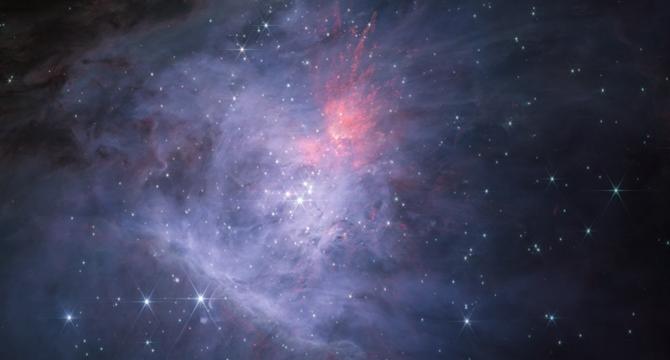
Image Credit: Universe Today
Rogue Planets are Born in Young Star Clusters
- Rogue planetary-mass objects, known as free-floating planets (FFPs), drift through space unbound to any other objects with uncertain origins.
- New research suggests that these FFPs are born in young star clusters where circumstellar disks interact with one another.
- PMOs don't fit neatly into existing categories of stars or planets, formed by a different process as per simulations.
- The research, titled 'Formation of free-floating planetary mass objects via circumstellar disk encounters,' highlights the unique origin story of PMOs.
- Astronomers first found evidence of rogue planets in the Trapezium Cluster in 2000, with subsequent findings raising questions about their origins.
- Hydrodynamic simulations show that PMOs are formed in dense environments within young star clusters, interacting and forming pairs or triplets.
- Simulation results indicate that PMOs form in the interaction of circumstellar disks during close encounters between stars in clusters.
- PMOs are metal-poor and likely to have their own disks, with their formation dependent on specific interaction velocities.
- PMOs emerge from gravitational chaos of disk collisions, representing a third class of celestial objects with a distinct formation process.
- The research signifies that dense clusters like Trapezium play a crucial role in producing PMOs, reshaping our understanding of cosmic diversity.
Read Full Article
11 Likes
Digitaltrends
286
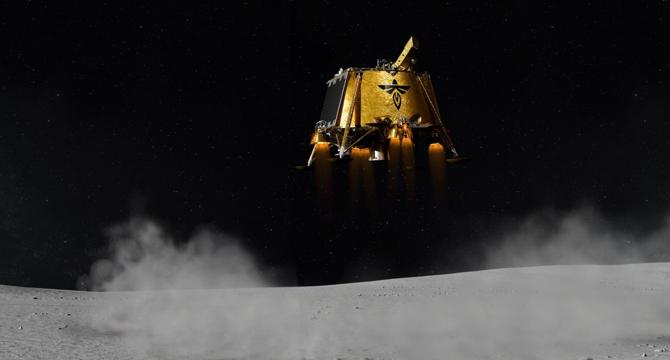
Image Credit: Digitaltrends
‘Quite frankly terrifying’: how Firefly’s Blue Ghost engineers are preparing to land on the moon
- Firefly Aerospace is preparing to land its Blue Ghost spacecraft on the moon's surface, a challenging feat due to the lack of landing aids and manual control.
- The pressure is high as Firefly aims for a successful soft landing, following the example of the Intuitive Machines Odysseus lander's less-than-perfect landing.
- The Blue Ghost team, led by Kevin Scholtes, relies on autonomous engineering during the critical moments of descent due to communication delays with the moon.
- Navigating the moon's surface without GPS poses challenges in determining location and speed accurately, requiring internal visual recognition of features.
- Selecting a safe landing spot involves advanced technology like terrain relative navigation and hazard avoidance to identify obstacles like boulders.
- Blue Ghost's crushable honeycomb legs help absorb impacts during landing, alongside laser altimetry and acceleration data for precise descent.
- The private moon mission by Firefly coincides with others like Intuitive Machines and ispace, aiming to inspire renewed interest in lunar exploration.
- Collaboration among competing companies and NASA's CLPS program promotes sharing of information and mutual support for successful lunar missions.
- The challenging nature of lunar landings and the 'terrifying' audacity of attempting such feats demonstrate the ambition and determination of the teams involved.
- As Firefly Aerospace's Blue Ghost spacecraft prepares for its lunar landing, the team faces nerve-wracking anticipation and rigorous preparations for this significant milestone.
Read Full Article
17 Likes
Discover more
Livescience
63
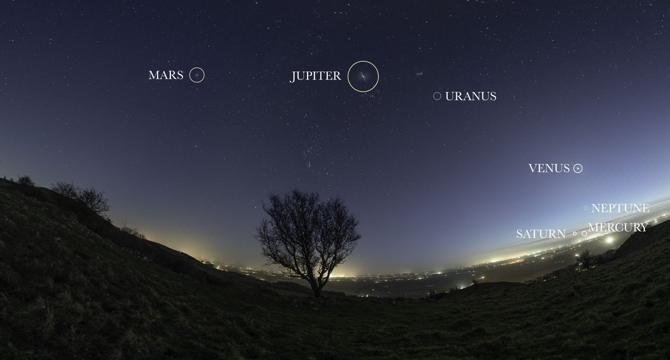
Image Credit: Livescience
'Planet parade' photo captures 7 planets in a line over Earth — possibly for the 1st time ever
- A stunning photo has captured all seven of our neighboring planets in Earth's sky at the same time, possibly for the first time ever.
- The photo, taken by astrophotographer Josh Dury, shows Mars, Jupiter, Uranus, Saturn, Venus, Neptune, and Mercury in alignment thanks to a rare 'planetary parade.'
- Terrestrial cameras have only recently become advanced enough to capture all the planets in the sky from the ground, making this photo likely the first of its kind.
- To capture the image, Dury used a composite shot made up of several panes, with each pane captured in multiple exposures.
Read Full Article
3 Likes
Universe Today
432
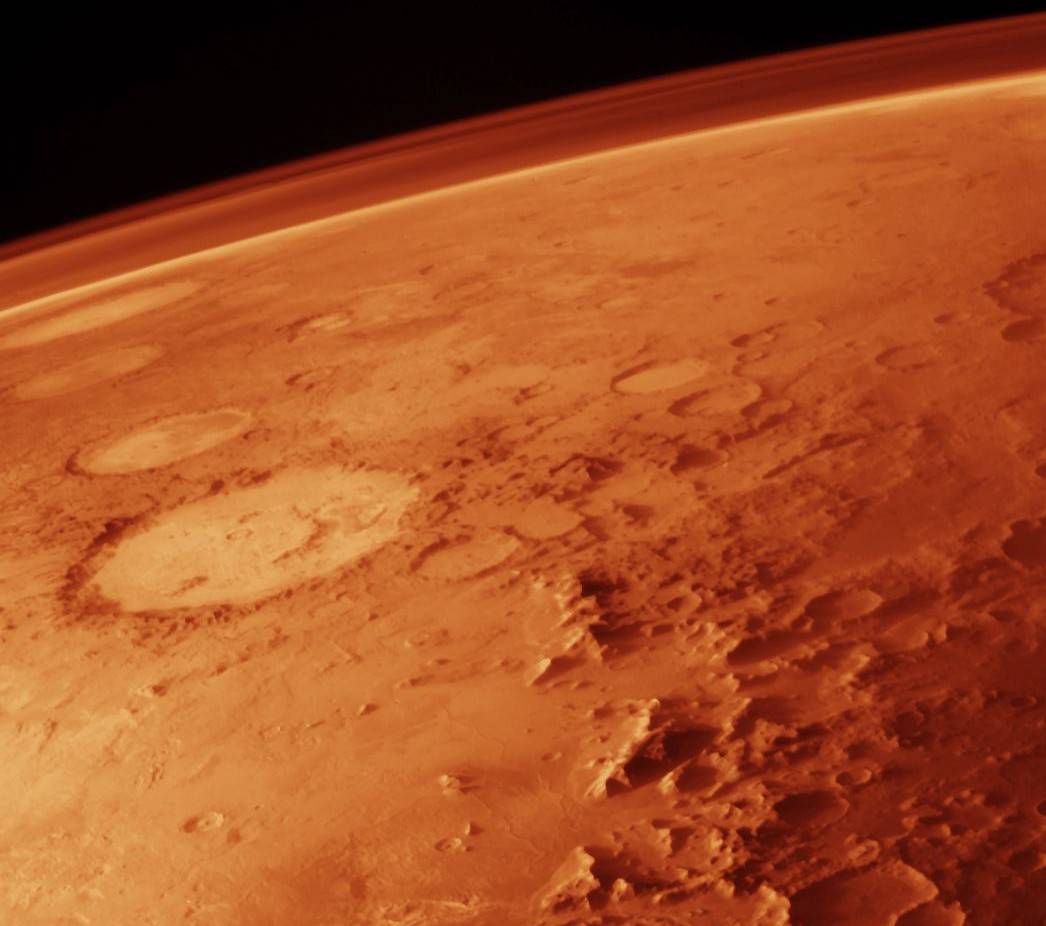
Image Credit: Universe Today
How Brine Shrimp Adapted to Mars-like Conditions
- Climate change effects have led to a shift towards studying extremophiles to predict human adaptability in space and inform astrobiology research.
- Italian researchers studied brine shrimp under Mars-like pressure, showing adaptability to survive in extraterrestrial conditions.
- Extremophiles like brine shrimp could indicate the possibility of life forms existing elsewhere in the Universe, aiding astrobiological studies.
- Earth's extremophiles can withstand harsh conditions, making them suitable models for studying adaptation in extreme environments.
- Artemia franciscana, a species of brine shrimp, was used in the study due to its ability to thrive in high-salinity environments.
- The study highlighted the resilience and adaptability of Artemia franciscana to hostile environmental conditions, showing potential for astrobiological research.
- Research on extremophiles like brine shrimp can provide insights into climate resilience, adaptation, and potential solutions for long-term human space missions.
- Studying the metabolic adaptations of extremophiles could aid in the search for biosignatures on other planetary bodies and support human missions to confined environments.
- Future missions to Mars and deep-space destinations could benefit from understanding extremophiles' adaptation mechanisms for closed-loop life support systems and food production.
- Simulations in Mars-like atmospheres have shown promising results, hinting at the adaptability and survival potential of life forms in extreme extraterrestrial conditions.
Read Full Article
26 Likes
Universe Today
382

Image Credit: Universe Today
A New Way to Measure Where the Milky Way’s Dark Matter Is
- A team at the University of Alabama-Huntsville has devised a new method using pulsars to map the distribution of dark matter in the Milky Way galaxy and understand its effects.
- Pulsars, rapidly spinning compressed stellar cores with strong magnetic fields, can help reveal the impact of dark matter on the galaxy through their spindown rates.
- The Milky Way's interaction with dwarf galaxies like the Large Magellanic Cloud induces a unique gravitational wobble, influenced by the presence of dark matter.
- By measuring the acceleration of pulsars due to the Milky Way's gravitational potential, researchers can map the galaxy's dark matter distribution.
- Previous work focused on binary pulsars, but the new technique allows for the use of individual pulsars, providing a more comprehensive understanding of dark matter.
- This innovative approach enables the measurement of small accelerations caused by dark matter, offering insights into its density within our galaxy.
- The research aims to further refine dark matter mapping in the Milky Way and advance our understanding of its distribution and effects on galactic structure.
- The study highlights the significance of pulsars in unveiling mysteries of dark matter and offers a promising avenue for future research in astronomy.
- These findings contribute towards expanding our knowledge of the universe's invisible matter and its role in shaping celestial bodies like the Milky Way.
- The novel technique developed by the research team opens up possibilities for more precise measurements and deeper insights into dark matter dynamics.
Read Full Article
23 Likes
Universe Today
77

Image Credit: Universe Today
Could Neutrinos Tell Us About the Inside of the Sun?
- Neutrinos generated through solar fusion reactions can provide insights into the Sun's internal structure.
- Multiple neutrino detection observatories on Earth are capturing solar neutrinos to construct a detailed map of the Sun's interior.
- The Sun is a massive sphere of hot plasma that generates energy through nuclear fusion.
- Neutrinos can travel through the Sun without being stopped, providing real-time information about its density structure.
Read Full Article
4 Likes
Nasa
410
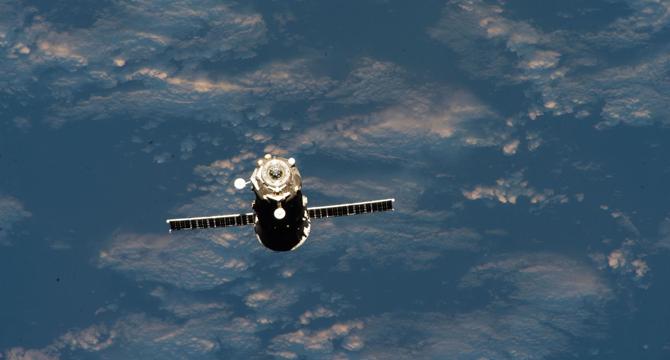
Image Credit: Nasa
Crew Studies Space Exercise While Waiting for Saturday Delivery
- Exercise research and muscle stimulation were the main research topics aboard the International Space Station
- Crew spends two hours daily on workout to counteract the effects of weightlessness including muscle and bone loss
- NASA Flight Engineer conducted experiments to understand the impact of exercising in zero gravity
- Roscosmos' Progress 91 cargo craft is scheduled to dock at the International Space Station on Saturday for a six-month cargo mission
Read Full Article
24 Likes
Blackenterprise
123

Image Credit: Blackenterprise
From The Newsroom To Outerspace: Gayle King Announces Participation In An All-Women Space Mission
- Gayle King announced her participation in Blue Origin's 31st flight, NS-31, which will have an all-female crew including Lauren Sánchez, Katy Perry, and Aisha Bowe.
- King initially hesitated but after receiving approval from her loved ones, including Oprah Winfrey, she decided to go on the space mission.
- Blue Origin is a private aerospace company focused on making space travel accessible to civilians. King's participation is part of their efforts to normalize civilian space travel.
- This is not the first time a television host will be participating in a space mission with Blue Origin. In 2021, Michael Strahan from Good Morning America took part in a Blue Origin flight.
Read Full Article
7 Likes
TechCrunch
314

Image Credit: TechCrunch
TechCrunch Disrupt 2025: Final 24 hours to save up to $1,130
- The early bird gets the worm and time is running out! You have less than 24 hours left to save up to $1,130 when purchasing passes to TechCrunch Disrupt 2025.
- Attend Disrupt 2025 at Moscone West in San Francisco on October 27-29 to celebrate two decades of TechCrunch Disrupt fueling innovation and impact in the startup world. Register here to secure the biggest Disrupt ticket savings of 2025 before today ends.
- Get your Disrupt 2025 tickets at the best prices before rates go up after the clock strikes midnight.
- TechCrunch Disrupt has been the premiere hub for founders, tech leaders, and investors to drive the future of entrepreneurship for two decades.
Read Full Article
18 Likes
Popsci
86

Image Credit: Popsci
March skygazing: A ‘celestial smiley face,’ a blood moon, and more
- In March, skygazers can look forward to sightings of Mercury, Venus, Jupiter, a lunar eclipse, and the spring equinox.
- Mercury will be visible in the first half of March, appearing brightly in the night sky, with prime viewing opportunities on March 1 and March 7.
- Venus will be prominent in early March, shining brightly and easily visible to the naked eye, creating a 'Celestial Smiley Face' with Mercury and the moon.
- On March 5, the moon will rendezvous with Jupiter, making the gas giant easy to spot alongside the moon and the star Aldabaran.
- A 'Blood Moon' lunar eclipse, the only full lunar eclipse of 2025, will occur on March 13, with totality between 2:26 and 03:31 a.m. EDT.
- The full lunar eclipse creates a 'blood moon' as the moon enters Earth's shadow, with light refracted through the atmosphere giving it a red hue.
- March 14 will feature the Full Worm Moon, reaching peak illumination at 2:55 a.m. EST, known for the earthworms emerging in spring.
- March 20 marks the Vernal Equinox, signaling the official start of spring with equal daylight for both the Northern and Southern Hemispheres.
- Venus transitions to the morning sky on March 22 after an 'inferior conjunction,' remaining a morning star for the rest of 2025.
- Stargazers are advised to seek dark skies away from light pollution for optimal viewing experiences and to embrace the beauty of the cosmos in March.
Read Full Article
5 Likes
Arstechnica
414
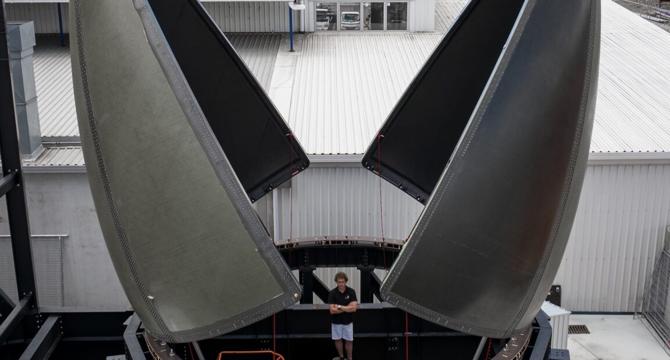
Image Credit: Arstechnica
Rocket Report: Rocket Lab’s news blitz; Starship mishap blamed on vibrations
- Rocket Lab announces the development of the medium-lift Neutron rocket, a rocket landing platform, and a new satellite design.
- Rocket Lab aims to launch the Neutron rocket in the second half of 2025, assuming near-perfect execution on the program.
- Australian startup, Gilmour Space Technologies, plans to launch its test rocket, Eris, on March 15, after obtaining necessary launch licenses and approvals.
Read Full Article
24 Likes
Earthsky
300

Image Credit: Earthsky
When’s the first day of spring? Here’s what you need to know
- The first day of spring differs for astronomers and meteorologists - March 20 for astronomers and March 1 for meteorologists.
- Astronomical spring is tied to Earth's tilt and the equinox, causing the start date to vary yearly.
- Meteorological spring consistently runs from March 1 to May 31 for data analysis purposes.
- Spring weather is a transition period, leading into warmer months and can bring severe weather outbreaks.
- Severe storms, including tornadoes, are more common in spring and summer.
- Safety measures for thunderstorms and tornadoes include seeking shelter and avoiding mobile homes during tornado warnings.
- The spring outlook for 2025 forecasts above-normal temperatures for most of the country and increased precipitation in certain regions.
- While astronomical spring starts on March 20, meteorologists opt for March 1 for consistent records and analysis.
Read Full Article
18 Likes
Knowridge
36

Image Credit: Knowridge
The solar system is taking a fascinating journey through the Milky Way
- Our Solar System is moving through the Milky Way at about 200 kilometers per second, passing through different parts of the galaxy.
- Research indicates that the Solar System passed through the Orion star-forming complex around 14 million years ago, impacting Earth's climate and geological records.
- The Orion complex is part of the Radcliffe Wave, a massive structure in the galaxy, discovered in 2020, consisting of gas and dust with star-forming regions.
- The Solar System's passage through the Radcliffe Wave compressed the Sun's heliosphere, allowing more interstellar dust to enter, potentially causing global cooling and climate changes on Earth during the Middle Miocene.
- The study, published in Astronomy and Astrophysics, suggests a link between the Solar System's passage through the RW and the Middle Miocene Disruption, an extinction event.
- Interstellar dust reaching Earth during this period could have affected Earth's climate by altering atmospheric greenhouse gases, possibly causing cooling.
- The research utilized data from the ESA's Gaia mission to track the Solar System's intersection with the Radcliffe Wave, aligning with the Middle Miocene climate transition.
- This study sheds light on the potential impact of interstellar dust on Earth's climate and geological records, providing insight into global climate change over long timescales.
- The Earth's passage through dense gas regions in the Milky Way may have significant implications for past climate transitions, as suggested by this research.
- The findings emphasize the intricate relationship between Earth's climate, extraterrestrial influences, and large-scale galactic events.
Read Full Article
2 Likes
For uninterrupted reading, download the app